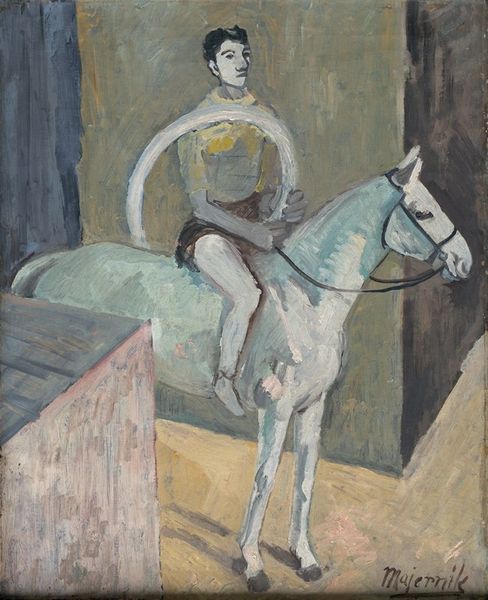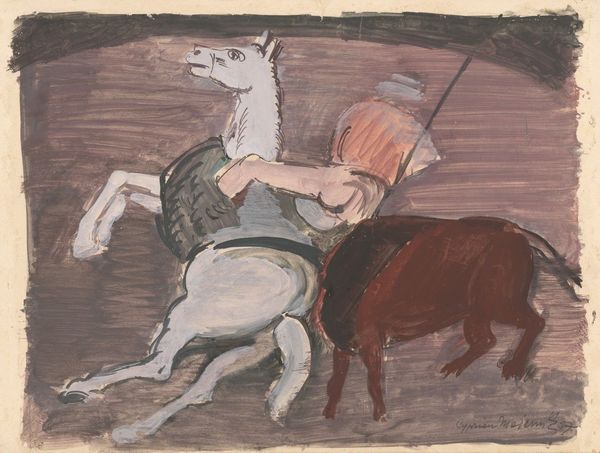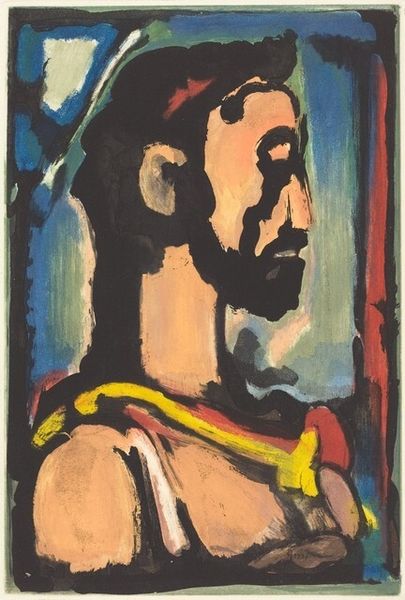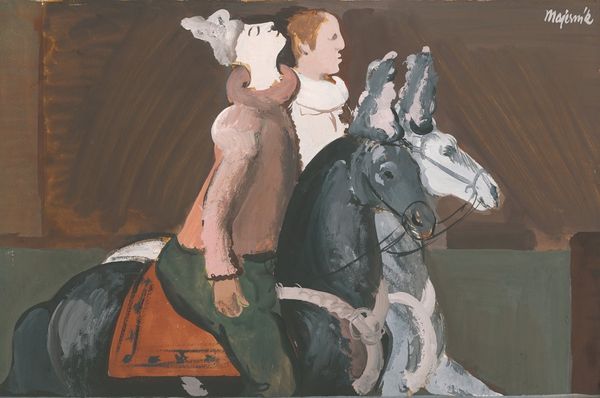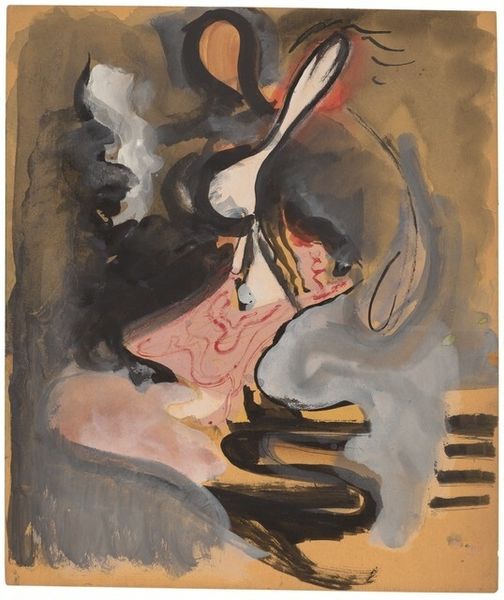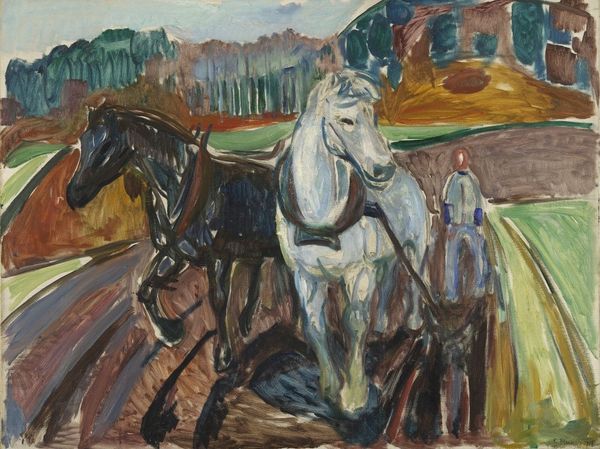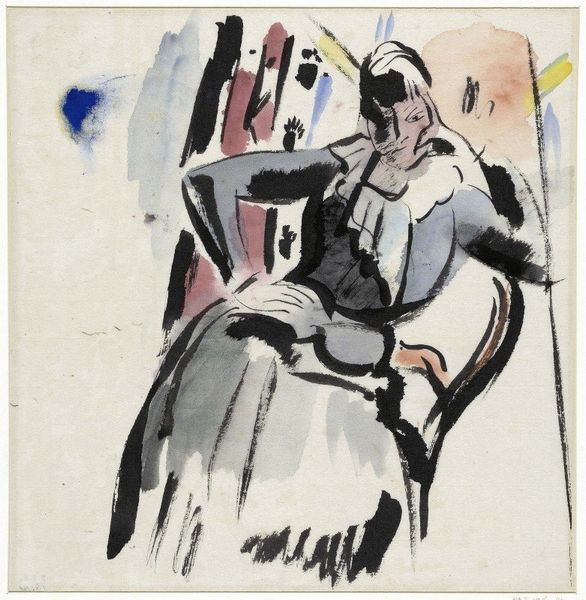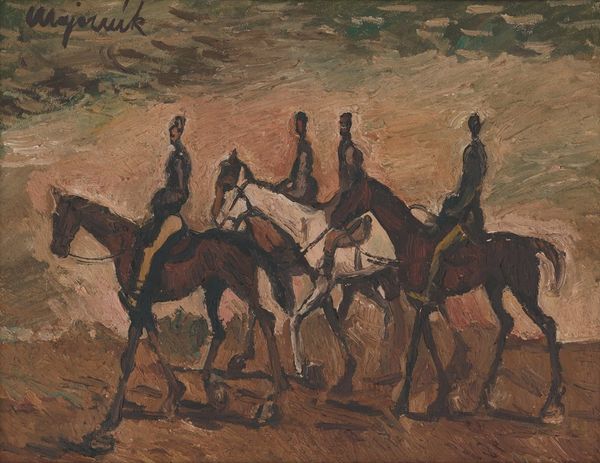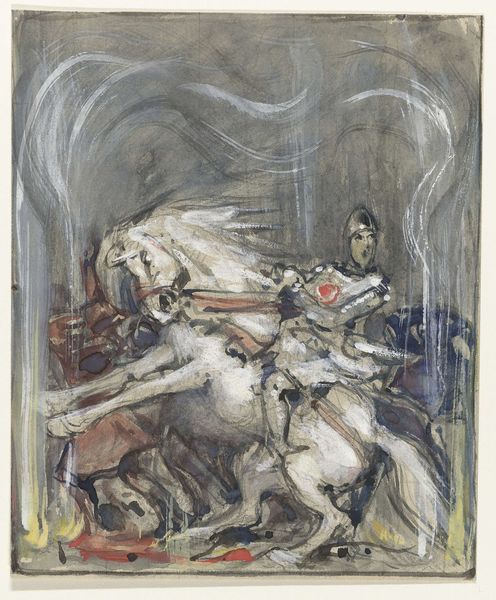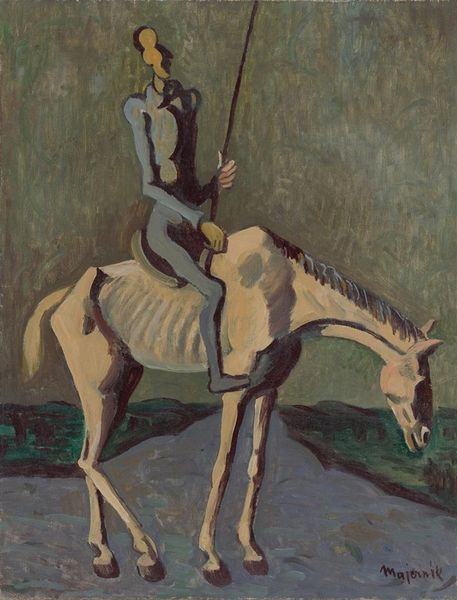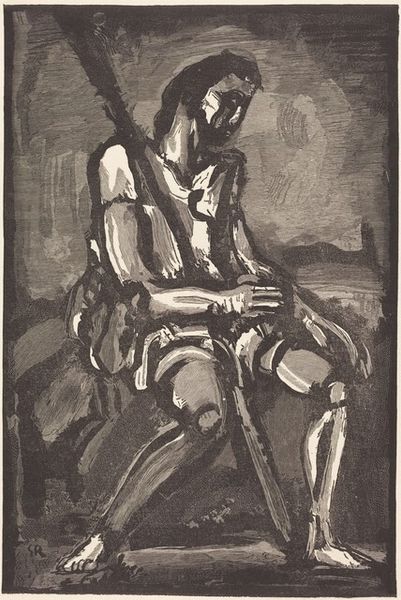
#
portrait
# print
#
figuration
#
expressionism
Copyright: National Gallery of Art: CC0 1.0
Curator: Standing before us is Georges Rouault's 1930 print, "Amazone". The print presents us with a female equestrian, a member of a circus perhaps, mounted upon a stately horse. What do you make of it initially? Editor: Well, the image strikes me immediately as being one of performance and constraint. The high-stepping horse, the rider’s vibrant red jacket, the whole scene feels intensely performative, yet tinged with a somber, almost melancholic mood. The darkness around them constrains, while also amplifying the spectacle. Curator: I see what you mean. The somber mood definitely emerges from the use of line and color. See how Rouault uses thick, dark outlines, almost like stained glass leading, to delineate the forms? The patches of color are then somewhat roughly applied within those boundaries, with hues of brown and green predominating. The whole structure pushes us towards an expressionistic framework. Editor: And if we consider the social and political climate of 1930s Europe, the performance takes on even deeper resonance. Circuses were a popular, often politically charged, form of entertainment and escapism for working-class populations dealing with rising social inequalities. This “Amazone” may have been a figure of empowerment on stage, defying conventional expectations of women, but still working for entertainment under exploitative arrangements behind the stage. Curator: The relationship between the woman and the horse is key to my reading of it, speaking compositionally. It lacks traditional heroic elements of equestrian portraiture. Their forms, both angled toward the right side of the frame, seem disjointed, despite their supposed partnership. Editor: Precisely. The woman seems perched precariously on the horse, almost a mere ornament. I can't help thinking about Laura Mulvey's arguments about "woman as image" in visual culture, in this piece. Curator: An intriguing perspective, highlighting gender representation in entertainment culture. While the thick, bold strokes give a sense of dynamism and action, as a print, it retains a level of artifice—it isn't quite as explosive or kinetic as one may expect. This print holds our attention both through a close formal reading of its constituent structures and through a more engaged study of the performer, who she represents and the time in which she lived. Editor: Indeed. From semiotics to society—a study of image as symbol, set within a definite time, is vital when trying to decode Rouault's striking “Amazone”.
Comments
No comments
Be the first to comment and join the conversation on the ultimate creative platform.
